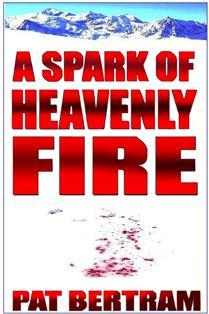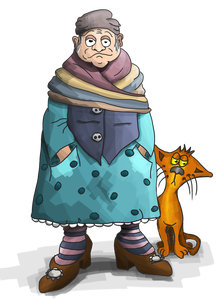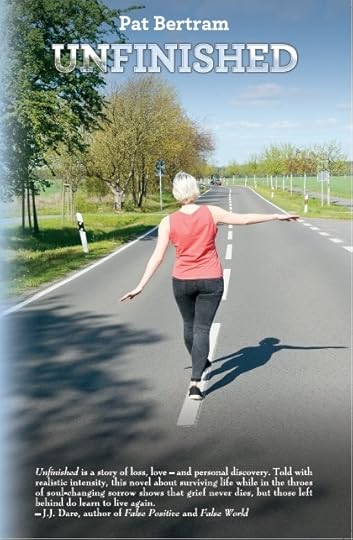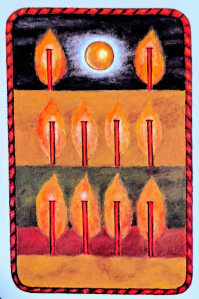Pat Bertram's Blog, page 70
February 8, 2021
A Trusting Species
I was standing in an aisle at the grocery store today, reading a label, when it struck me that for all our vaunted skepticism, we are a trusting species. There is no way to know for sure that the ingredients listed on the label are the only ingredients in the product, in fact, there’s a better than average chance that there are things in the product that aren’t listed on the label. For example, a certain amount of pesticides are allowed by law to be ignored when a product is advertised as “organic.” Many ingredients, not just pesticides, are actually included in the definition of certain foods, so even though a food my advertise itself as “sugar free,” that is not necessarily the case. And yet, we still read labels, still buy things according to what we read.
Because we are a trusting species.
Oddly, while we insist on full disclosure when it comes to food (even though we don’t always get it) we don’t demand the same sort of itemization with drugs. We take what the doctors prescribe (and they prescribe what the drug companies suggest they prescribe) because, evidence to the contrary, we trust that those people have our best interests at heart.
When it comes to doctors, survey after survey shows that people don’t trust the medical establishment, don’t trust doctors, yet when asked specifically about their doctor, they trust her (or him) implicitly. Which is a weird sort of syllogism. If all doctors are untrustworthy, and if everyone’s doctor is trustworthy, it somehow comes out meaning that all doctors are trustworthy.
Logically, it doesn’t make sense, but it does if you realize — ta da! — that we are a trusting species.
I think nowhere is this trust so apparent as in drug commercials. Commercial after commercial shows happy, laughing people, so thrilled to have taken the drug of choice (which almost always has three syllables, and one of the letters in one of those syllables is frequently a Q, X, or Z) yet while we watch these happy people, and while that oh-so-catchy drug name is oft repeated, there is a running commentary about all the horrible things that drug could do to you if you take it. And yet people not only agree to take it, they sometimes go running to their doctor (the only doctor in the world who is trustworthy) and ask for the drug by name.
Because we are a trusting species.
The trouble is, we cannot simply go by our own senses, believing only what our eyes, ears, and nose tell us, because those senses are basically lying to us. What we see is not what actually exists (which to the best of anyone’s knowledge or belief are various wavelengths of energy that somehow disappear into uncertainty and then perhaps into nothingness the more they are studied). Instead, what we see is what our brains decide to show us as they interpret that energy.

And we believe because . . . yep, because we are a trusting species. We have to believe our eyes and other senses. Otherwise, we’d be just streams (or strings or bundles) of energy interacting with other bundles of energy.
It’s not our fault that we are a trusting species — it’s how we were made. We have to trust, though to be honest, some of us have a harder time trusting than others do. We’re the sort who stand in grocery store aisles and wonder what the truth is about the ingredients listed on the product we are holding in our hand.
***

What if God decided S/He didn’t like how the world turned out, and turned it over to a development company from the planet Xerxes for re-creation? Would you survive? Could you survive?
Click here to buy Bob, The Right Hand of God.
February 7, 2021
Nothing in My Head
This is one of those days when I have nothing to say, when there’s nothing in my head that needs to be put into words. I’m not sure if it’s a good thing, signifying that I’m at peace with my world, or if it’s a bad thing, signifying . . . actually, I don’t know what it would signify. That I’m stagnating? I just checked for synonyms for stagnating, and the words that showed up — festering, rotting, deteriorating — seem to indicate a lot of activity, and there really isn’t much activity of any kind going on in the thought department.
Oh, there is that conspiracy tale I’m playing around with but don’t really want to get involved with writing — you know the one where a certain disease that virologists were enhancing to be more damaging escaped from a lab. In my scenario, they do it on purpose, though what that purpose is, we won’t find out to the end of the story. As the story progresses, it turns out that the disease the citizenry are told that is causing the pandemic is something quite different from what it actually is, but since the official story blames a variant of a common virus, one that has been known for decades, a large percentage of those who are tested get positive results for that particular virus rather than the true one. As more and more people get sick, the various populations of the world start clamoring for a vaccine, which, of course, is what the perpetrators of the pandemic want. They have something they want to inject into the world’s population — perhaps some sort of tracking chip, though I haven’t yet figured out exactly what it is they want to inject — and they know people won’t accept the injection without a reason, so, they created the reason: the pandemic. Hence, millions of people swarm to get injected while the perpetrators look on with satisfaction.
Yeah, that conspiracy tale.
As I said, I’d never write it because part of it hits too close to home, and I generally stick with stories of government shenanigans based on events that happened decades ago, but it does make me wonder how much of that which we are told is true really is true. How would we know? In this case, we know people who got sick, even know someone who died, but beyond that, what actually do we know on our own without someone putting thoughts into our heads? (Which, of course, would be the sub story of this particular tale.)
Come to think of it, it’s probably a good thing my mind is mostly empty. I wouldn’t want to start believing my own story and get paranoid about all the changes going on in the world because of this misbegotten parasite. (Apparently, viruses are classified as microscopic parasites since they cannot live for long or reproduce outside a host body.)
In retrospect, since I’m mostly staying away from any news source, it makes sense that I have no deep thoughts about anything right now since I am purposely restricting what goes in. And, of course, nothing can come out if nothing goes in.

***

If you haven’t yet read A Spark of Heavenly Fire, my novel of a quarantine that predated this pandemic by more than ten years, you can read the first chapter online here: http://patbertram.com/A_Spark_of_Heavenly_Fire.html
Buy it on Amazon here: https://www.amazon.com/gp/product/B0024FB5H6/
Download the first 30% free on Smashwords: https://www.smashwords.com/books/view/1842
February 6, 2021
Alone Again . . . Naturally

Because of a change in the situation of the woman I have been working for, I am on a hiatus from work. Whether this is a permanent furlough or just temporary, I don’t know, but for now, I’m back to being fairly isolated. I’m hoping the weather cooperates so the workers can come and finish some of the jobs they’ve started, such as digging the dirt away from the house and repairing the cracks in the foundation, because having them around the place makes me feel less isolated.
Even though it’s getting cold again, I am trying to take a walk every day, bundling up against the chill winds, so at least that helps me feel more a part of the world. I can also make an appointment to get more books from the library, and if I get desperate, I can watch the few hand-me-down DVDs I’ve collected. All those things make me feel less isolated, though they don’t really do anything to actually make me less isolated. I don’t suppose it matters, though, and won’t for a while longer. I do well on my own since I have hermit tendencies, though I’m not sure how healthy such isolation is in the long run.
After Jeff died, I made sure to keep active, to make friends, to be involved in various groups and to do new things because I was afraid of becoming stagnant. I redoubled those efforts once I moved because I knew what a challenge it would be making new friends, but all that effort went by the wayside with The Bob restrictions, so I have a hunch I am now at the stagnant stage. It’s possible that spending so much time alone is skewing my perceptions and that I have not yet become torpid, but it’s hard to tell because . . . well, because I am alone so much.
I suppose I could do what so many people are doing — get involved in activities with a small group of friends, but unfortunately, just because people have received the vaccine, it doesn’t mean they won’t still spread The Bob. After all, the vaccine is only 90% effective (and less so when it comes to new variants) while isolation is 100% effective.
And truly, does it really matter if I’ve become stagnant, especially if I don’t know the truth of the matter? And so what if I become the crazy cat lady sans cats? If I’m the only one around, who will know?
***

Pat Bertram is the author of Grief: The Inside Story – A Guide to Surviving the Loss of a Loved One. “Grief: The Inside Story is perfect and that is not hyperbole! It is exactly what folk who are grieving need to read.” –Leesa Healy, RN, GDAS GDAT, Emotional/Mental Health Therapist & Educator
February 5, 2021
A Cluster of Crises

I hope all of you are doing okay. I don’t know what’s happened this year, but it seems as if the earth was zapped with a whole lot of negative energy. I’m fine, but so many people surrounding me are dealing with various crises, such as accidents, falls, cracked bones, radiation treatments, poor health prognoses, and the death of a loved one. My only crisis is a financial one — the incredible rate increase for my already astronomical house insurance (the rates in this area are among the highest in the country — because of wind and hail damage, I’ve been told), but the solution there is an easy one: find a different insurance company or find ways to be more economical so I pay the bill and worry about next year’s insurance when next year comes.
There’s not much I can do about other people’s problems but be there if they need something. It does seem odd, though, that so many things are going wrong in such a short period of time. I hate the thought of being grateful that so far I am on the caregiving end of the situation rather than the care needing end because it seems so . . . smug or complacent or arrogant or somesuch, but I am grateful that, as of now, I am healthy and able to help where I can.
I have no words of wisdom in the situation. In fact, I’m hurrying up to get this finished so I can go be with a woman who needs help, but I wanted to write something so as not to break my blogging streak, and this cluster of calamities is on my mind.
Take care of yourself! There are enough ills in the world without our adding to it.
***

Pat Bertram is the author of Grief: The Inside Story – A Guide to Surviving the Loss of a Loved One. “Grief: The Inside Story is perfect and that is not hyperbole! It is exactly what folk who are grieving need to read.” –Leesa Healy, RN, GDAS GDAT, Emotional/Mental Health Therapist & Educator
February 4, 2021
Tooting My Own Horn

Today is my 500th day in a row of blogging. I can’t say that I’m proud of everything I’ve written, but I am pleased that I have managed to keep to the discipline of a post a day for so long.
It is also my 222nd day of taroting. I know that’s not a word, but I’m not exactly studying the tarot, nor am I doing what is considered a reading. I am simply picking a card, making a note of all the various interpretations of each card so that when I use a tarot deck where the instructions are in an archaic form of Italian (as a couple of the decks are), I will be able to check my own notes for what each of those cards might mean.
If you don’t know why my interest in the tarot, it’s that I ended up with my deceased brother’s tarot collection, and I started my card-a-day practice as a sort of memorial to him. (In case you missed the posts where I talked about his decks, I have about four dozen different decks, some collectables, some common, some esoteric, and each month I pick a different deck to use to see if there is any one that will speak to me. So far, I haven’t heard a word from any of them.)
And today I’ve folded my 140th origami crane. My intent was to do one a day, thinking that by the end of three years I will have made my senzaburu (1000 origami cranes), but I find myself folding cranes whenever I have a few free minutes because the idea of all those cranes has captured my imagination. The legend is that anyone who folds a thousand origami cranes will have a wish come true or happiness and eternal good fortune. Since I have no particular wish (except to sell thousands of copies of Bob, The Right Hand of God), I’m aiming for eternal good fortune. Though to be honest, I tend to think I have that now, for which I am grateful.
Still, it doesn’t hurt to hedge my bet. Actually, I think the benefit comes in the folding rather than the finished senzaburu, but since it’s early days yet, I don’t know for sure.
I’ve also folded various other birds just for fun. Those I’m thinking of hanging in my garage to let me know where to stop and park.
This is all I have to toot about. These things are nothing special, really, except that I am doing them, and they all add up to a daily discipline, proving . . . I don’t know . . . perhaps that I’m alive and kicking and still going strong.
***

What if God decided S/He didn’t like how the world turned out, and turned it over to a development company from the planet Xerxes for re-creation? Would you survive? Could you survive?
Click here to buy Bob, The Right Hand of God.
February 3, 2021
The Sweeping Sun
The house Jeff and I lived in was had a long view of the horizon, with Grand Mesa off to the side. Since nothing impeded our view from the living room window, we could watch the sunset every night as it swept from the far southwest in the winter to the far northwest in the summer. I knew the exact notch in the Mesa where the sun seemed to hover for a few days before it began its journey south again, and it really shook me up one year when the final sunset of winter took place several notches beyond the norm, as if the earth were lurching on its axis. Besides that year, though, the sun swung back and forth with an even beat.
It almost feels like that now, though I have no long view — no view of any sunset, actually — just trees and houses across the street impeding the horizon. What I do have, this year, is my nightly walk home from my job. I was just settling down into the dark, enjoying the rare night walk, when, one day at a time, the light crept up on me. And now I’m walking home in the pre-dusk dimness, which is almost as bright as midafternoon.
I didn’t get to feel this gentle change of the light at the beginning of the sun’s journey into winter because of daylight savings time. One day I walked home in the bright sunshine, the next time I walked home it was dark.
Now, though, I can feel the subtle changes as the days get perceptibly longer. In no time at all, it will be spring!
Actually, it felt like spring today — the last snow has melted, and the temperature got up near seventy. Tomorrow will be the same, but then the temperatures will drop to the more seasonal low of 7.
But whatever the weather, the days will be getting longer and lighter, and though I can’t see the sun setting, I know it is sweeping inexorably toward the northwest.

***

What if God decided S/He didn’t like how the world turned out, and turned it over to a development company from the planet Xerxes for re-creation? Would you survive? Could you survive?
Click here to buy Bob, The Right Hand of God.
February 2, 2021
Changing Foods

So many foods taste different from what I remember them tasting in my youth. Although people say it doesn’t matter where things are grown, it makes a huge difference. When I was young, most of our fruits and vegetables were grown in the United States, and were only available when they were in season. But oh, they were so worth waiting for! Oranges so sweet they put sugar to shame. Tomatoes so juicy and tangy and sweet it was easy to understand they were basically a fruit and not a vegetable. And now? Oranges that come from south of us are bitter, tomatoes are tasteless, and all manner of foods have depleted nutritional value.
Oddly, it works the other way, too. I first had kiwi fruits from New Zealand, and they were fabulous, but those grown in the USA are rather bland. Same with Granny Smith apples; when they came from New Zealand, they were sweet and tangy and crisp; often those grown in the USA are mealy and sour.
One thing that is vastly different from my youth is Hershey’s cocoa powder. Back then, because of the high cocoa butter content, the powder couldn’t be dissolved in a liquid. To make hot chocolate, you had to heat sugar and cocoa and a bit of milk, stirring constantly, to make a syrup, and then gradually add the rest of the milk, still stirring. I tend to think it’s one of the reasons powdered hot chocolate mixes became so popular — you just dumped the mix into a mug, add hot water, and instant hot chocolate! Now, cocoa is so devoid of fat that it is instantly dissolved in milk. It’s also much blander and the color is a lot paler.
My mother made a meat dish that I dubbed “black meat” when I was very young because of its intensely brown color. (When I asked her how to make it, she told me to “slice any cheap beef into thin strips, roll in butter mixed with paprika, salt, and garlic powder. Brown the meant, and a little water, finely chopped onions, 1 teaspoon cocoa, a dash of cloves, and a bit of leftover coffee. Then cook forever.”)
The last time I made this, the meat tasted sort of the same, but the color was a regular gravy color. The cocoa powder simply is not the same. I thought perhaps they’d been adding an alkali to neutralize the natural acids like a Dutch processed cocoa, but apparently not. Oddly, Dutch processed cocoa is supposed to be darker than the more acidic cocoas, but when I was young, it was the opposite — you could always tell the Dutch processed cocoas because they were lighter in color.
That’s the problem with having lived so many decades — too many things are vastly different, and the people who write the articles now to explain those differences don’t go back far enough, probably because they aren’t very old and can’t imagine the world being any different before they set foot upon the earth.
A brief stint on Google showed me a bunch of gourmet brands that have a high fat content and are darker in color that grocery store cocoa, so I might shop around and see if I can duplicate the taste and texture of the old Hershey’s cocoa. But for the other foods, such as real oranges and real tomatoes? I’m out of luck.
***

While sorting through her deceased husband’s effects, Amanda is shocked to discover a gun and the photo of an unknown girl who resembles their daughter. After dedicating her life to David and his vocation as a pastor, the evidence that her devout husband kept secrets devastates Amanda. But Amanda has secrets of her own. . .
Click here to buy: Unfinished
February 1, 2021
New Month, New Tarot Deck
Every month I’ve been using a different tarot deck in an effort to see if the deck feels the same as the rest, or if it resonates with me. Although I like a couple of the decks better than any of the others, either because of size or feel or the artistry, I haven’t felt any special affinity with any of the cards.
This month’s choice of decks is the Jungian tarot, which is based on archetypal images designed to activate the imagination. According to the designer of the deck, most of the current values assigned to the various cards were arbitrarily developed in the nineteenth century by occult groups. By contrast, he says the attributions in the Jungian Tarot were painstakingly researched in an effort to relate tarot interpretation to more ancient traditions.

Sounds good, right? Well, today’s card, the ten of wands activates my imagination not at all. The image gives me the impression of being weirdly inappropriate since it seems sinister, and the ten of wands is a rather benign card relating to careful management, functioning within a large organization, success, the loneliness that comes from success, and reacting defensively to badly organized ideas. Which is not a whole lot different from the meanings assigned by other tarot interpreters. Most say the card is about success and the perhaps oppressive responsibilities one has to take on because of that success; a need for prioritizing, delegating, and sharing your burdens. (None of which seem to have any relation to my life at all.)
It almost seems as if the major arcana (the cards most people have heard of, such as the fool, the hanged man, the sun, the moon, etc) are the cards that every tarot artist and interpreter spend most time on, and the others are “also rans.” (Which is why so many readings, such as online readings, use only those twenty-two cards rather than all seventy-eight cards.)
When I do graduate from picking just one card to doing a periodic reading (weekly or monthly), chances are I will only use those twenty-two cards until I get familiar with how the cards fit together to show . . . well, to show whatever it is they are supposed to show. I still don’t know. I do know the tarot isn’t really about foretelling the future; it’s more about communicating with our deepest being, but so far, there’s not a hint of what I might be hiding in my innermost depths. It could be I have no such depths. It could be the cards are not speaking to me, and if they are, I haven’t learned to listen. It could be that the whole thing is hokum.
So far, the only imagination it has activated in me is the possibility of using the cards as story telling cards — using each of the face cards as a character, and surrounding them random cards to see how their lives would unfold. But the idea has gone no further than that. Nor have I deepened whatever intuition I might have or learned anything I don’t already know.
But I have the cards, so it does me no harm to pick one every day just to see what I pick.
***

While sorting through her deceased husband’s effects, Amanda is shocked to discover a gun and the photo of an unknown girl who resembles their daughter. After dedicating her life to David and his vocation as a pastor, the evidence that her devout husband kept secrets devastates Amanda. But Amanda has secrets of her own. . .
Click here to buy: Unfinished
January 31, 2021
What’s in a Name?

I’m reading a mystery that takes place in a historic coffee shop, which is interesting in itself because I didn’t realize how far back coffee shops went — way back to the 1700s, actually. And maybe even before. I thought they were a more recent idea, though I don’t know why I supposed that — after all, beverage restaurants go back to the beginning of time. (The time of commerce, anyway.) Grog shops, pubs, taverns, wineries, tea houses, so why not coffee shops? I’m sure when chocolate became popular in the 1700s, there were chocolate shops, too, though a cursory look at Google’s offerings didn’t tell me if my surmise was correct.
But I should have known about coffee shops; after all, the term “café society” was coined in the early twentieth century, though the custom of literati, artists, and socialites gathering at coffee shops after attending cultural activities stems from the nineteenth century in the United States. Although coffee shops were prevalent in European culture, they didn’t become the cultural icon they are today in the USA until the later part of the twentieth century.
So, here I am in a fictional coffee shop that has been around for a hundred years, “listening” to the manager of the shop ramble on and on about the different coffee beans, the different ways of brewing, the different tastes and smells (particularly smell since apparently half the appreciation of coffee lies in the scent), as well as the various undertones, overtones, and aftertastes.
Reminds me of wine. People always taste more in wine than I’ve ever been able to even guess. Maybe it’s like music — even a good barbershop quartet grates on my poor ears because I hear only a single discordant sound. Afficionados and others with a musical ear can hear each tone separately, and so they can appreciate the harmony.
I’ve never been able to taste anything in wine but . . . wine. I’m sure it comes as no surprise that my tastes run more to a slightly sweet sparkling wine, though the last time I had any wine (a glass of Seven Daughter’s Moscato) was a couple of years ago when a friend took me out to dinner to celebrate my buying a house. So you can see, I am not a big fan of fermented grapes.
And coffee? It all tastes the same to me, so I find it amusing that I am drinking a cup of instant coffee doctored with honey and lots of cream while I am reading what amounts to a connoisseur’s guide to coffee sandwiched between a couple of murders.
It’s a good thing I never aspired to be member of café society. There’s just no getting away from my plebian tastes when it comes to . . . well, almost everything. Books, movies, art, coffee, wine — plebian all the way. It’s ironic, really, when you consider that my name comes from patrician, which is the exact opposite of plebian.
I guess the answer to Shakespeare’s question, “What’s in a name?” is “Nothing.”
***

What if God decided S/He didn’t like how the world turned out, and turned it over to a development company from the planet Xerxes for re-creation? Would you survive? Could you survive?
Click here to buy Bob, The Right Hand of God.
January 30, 2021
The Art of Living
I visited my friend today, the one who is dealing with end stage cancer, and it was a nice visit. The four of us were there — the four who have formed a small family and who celebrate holidays together — so it was fitting we all got together for this informal celebration of life.
None of us were morbid or melancholic in any way — not the three of us (including her husband) whose mates have died, and not our lovely friend who is facing her final months. We simply visited as we normally do while nibbling on nutritious snacks. The talk revolved around food as it often does among the four of us, perhaps because our food backgrounds are completely different; two of us are native-born Americans and two are from widely different Asian countries.
The food and the talk of food seemed to fit the mood we established of living for today without any thought of what tomorrow might bring, because what is more life affirming that food? Not only does it nourish our bodies and spirits, it unites us with our heritage, and it brings us together in a peaceful and sharing manner.
I am truly glad we had such a pleasant visit. In a side chat, the other widow and I mentioned how sorry we were for our friend’s trouble, how sad we were for ourselves, and that we didn’t really want to think about “it.” So we didn’t.
I don’t know if I could have endured a tearful time. After all, she is still here, still living each day the fullest she can. And isn’t that all any of us can do? Some of us might know our expiration date, at least to the extent of a doctor’s guess, but no one truly knows what tomorrow might bring. So we live each day with an almost careless lack of concern. And isn’t that just as important when it comes to an end, whether our own or a loved one’s?
After Jeff died, I often mentioned in my blogs about his “time of dying” or his “dying years,” but those are misnomers. Even when a person is dying, he is living, even if he’s in too much pain to care.
I remember crying to the hospice social worker who would come and check on us, that he hadn’t had much of a life, which seemed to make his death all that much more tragic, but she reminded me that whatever one has to deal with — disregard from parents, lack of financial success, ill health, whatever — it is still life.
And I remind myself of that now. However long I have with my friend, it will be about enjoying the time together, because this is part of living. Maybe it’s even the art of living.

***

Pat Bertram is the author of Grief: The Inside Story – A Guide to Surviving the Loss of a Loved One. “Grief: The Inside Story is perfect and that is not hyperbole! It is exactly what folk who are grieving need to read.” –Leesa Healy, RN, GDAS GDAT, Emotional/Mental Health Therapist & Educator



